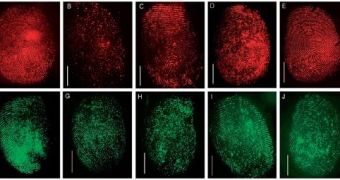Fingerprints remain the main tool in identifying a criminal. If fingerprints revealed more, the pool of subjects would be greatly diminished, easing forensic investigations.
A team from the University of East Anglia in Norwich and King's College in London led by David A. Russell has succeeded in employing specific antibodies to distinguish between the fingerprints of smokers and those of nonsmokers.
A fingerprint must fit in a database; if not, the suspects' fingerprints must be compared: this could be easier now due to more limited pool of suspects. Still, the researchers would like to detect in fingerprints' perspiration anything that could betray a criminal: drugs, medications, consumed food or diseases signs.
The new method of detecting the smokers is very secure, as it avoids false results from chance due to contact with tobacco, because it targets cotinine, a metabolite which emerges in the body after nicotine intake.
The fingerprints are wetted with a solution of gold nanoparticles, which present cotinine-specific antibodies bound on them. The antibodies interact with the cotinine. A second antibody, tagged with a fluorescent dye, is applied after the first operation. The second antibodies are attached to the cotinine antibodies and this leads to a concentration of these fluorescent antibodies around the gold nanosphere, amplifying significantly the fluorescent effect.
The overall effect is that the ridge patterns of smokers' fingerprints shine; those of nonsmokers do not. The fluorescent fingerprints can be compared to known prints, just as it is done in common procedures.
The fluorescence turns visible even the tiny sweat pores along the ridges, useful for a more precise assignment. The method could also be employed as a simple and effective anti-doping test, but also in checking suspicious drivers, without the need for blood samples.
Sample manipulations by the subjects could not be made, as fingerprints are unique. In medical diagnostics, this method would eliminate the danger of sample mix-ups.

 14 DAY TRIAL //
14 DAY TRIAL //